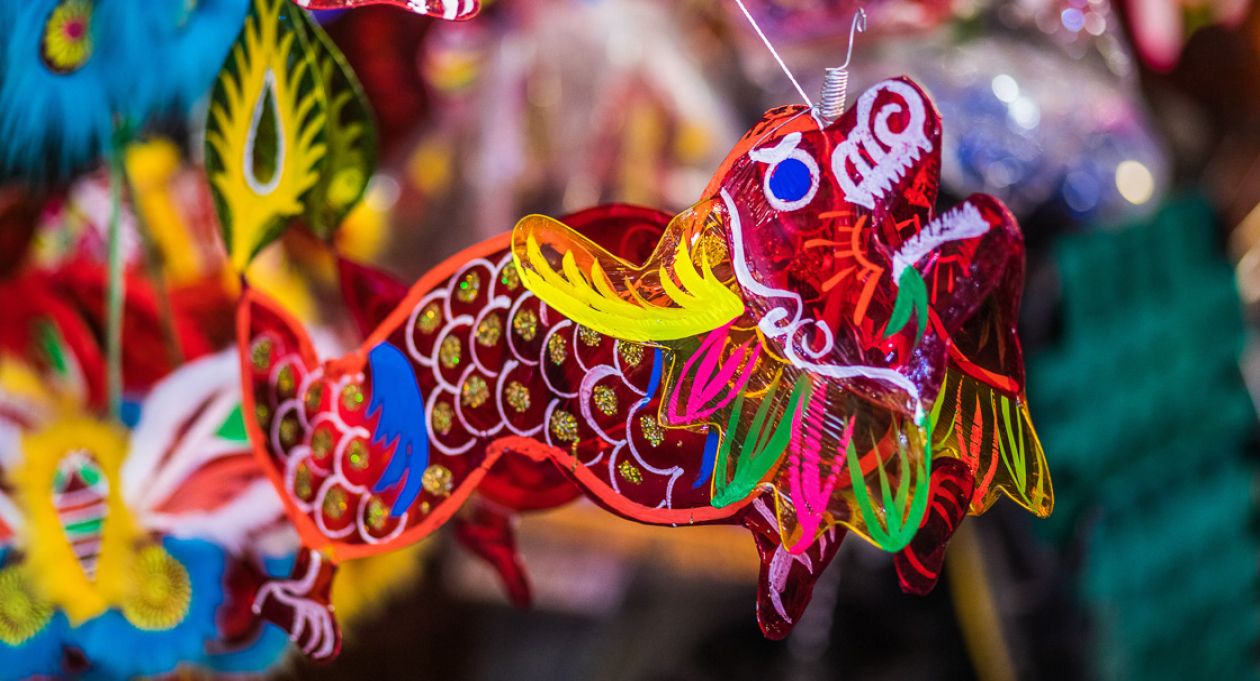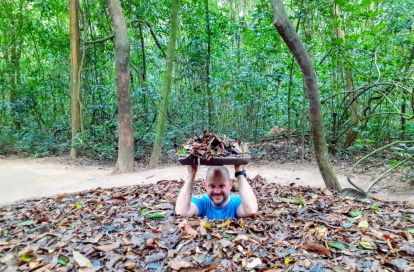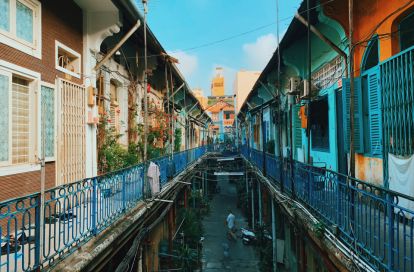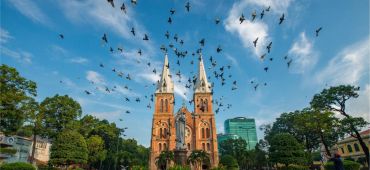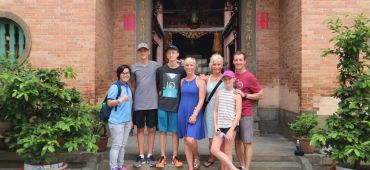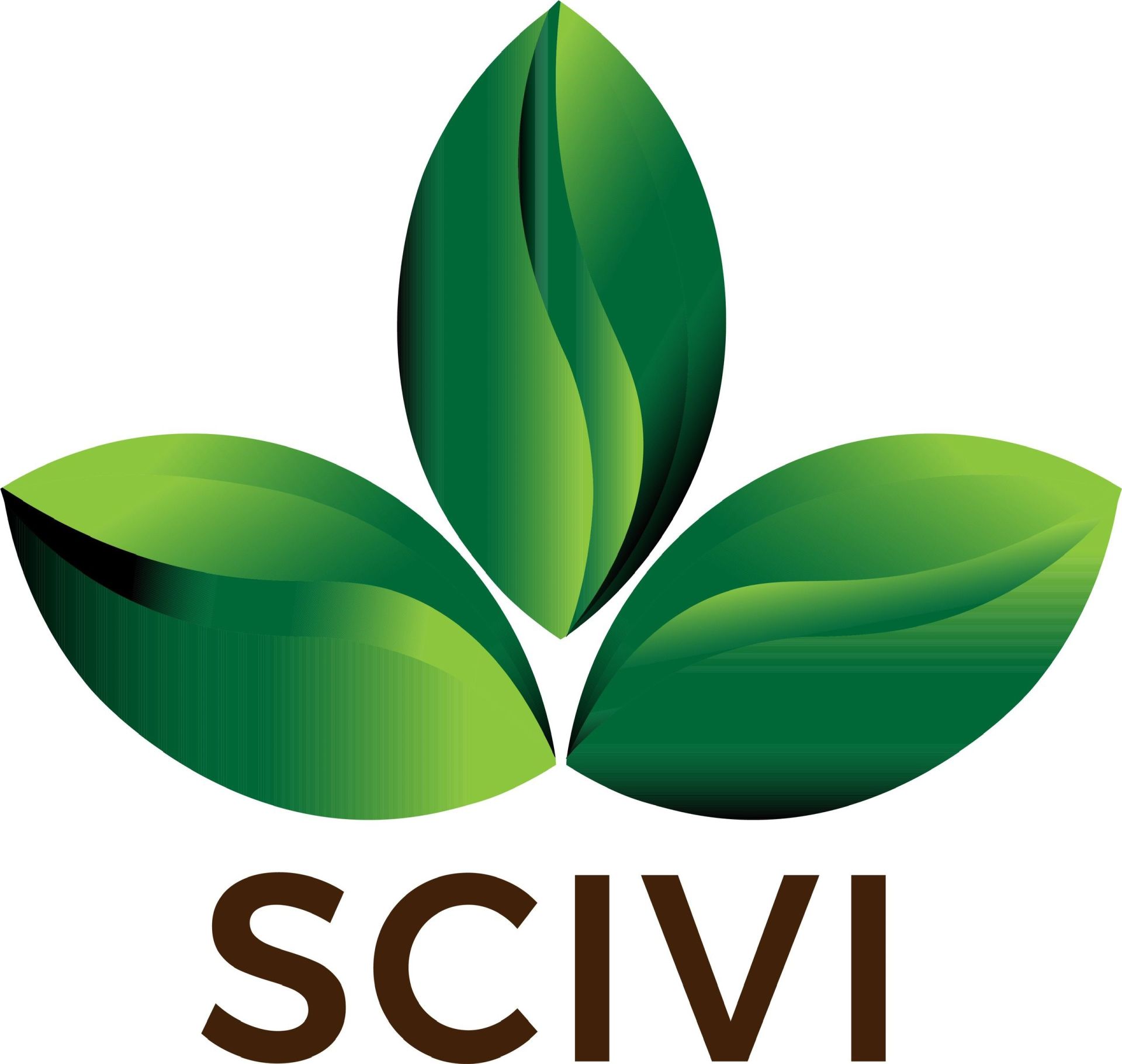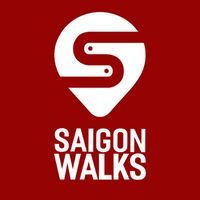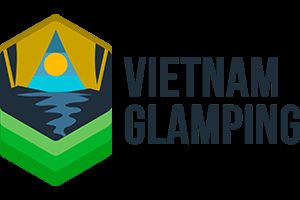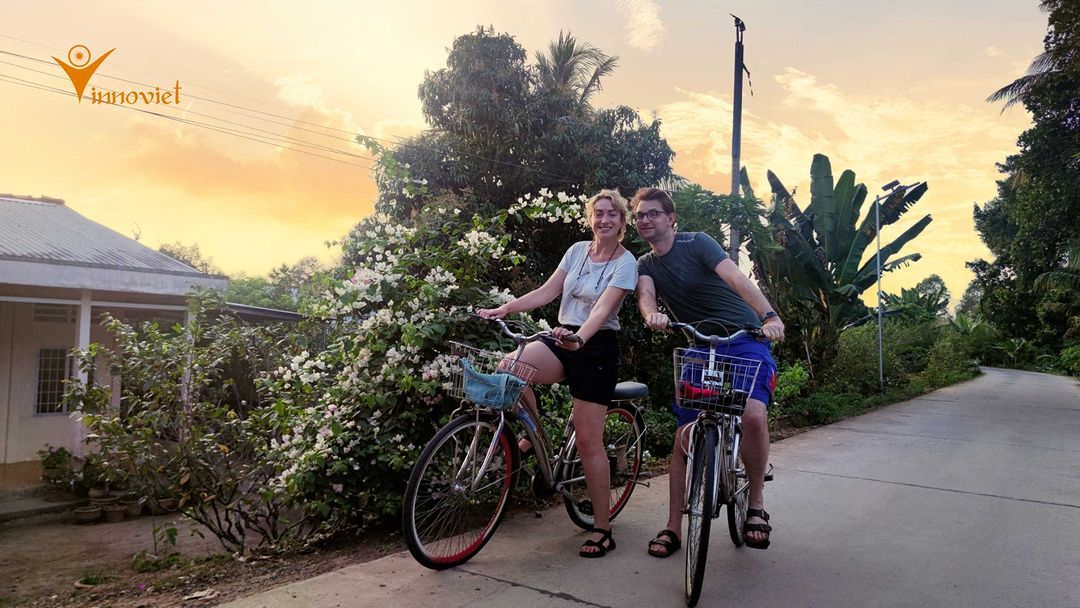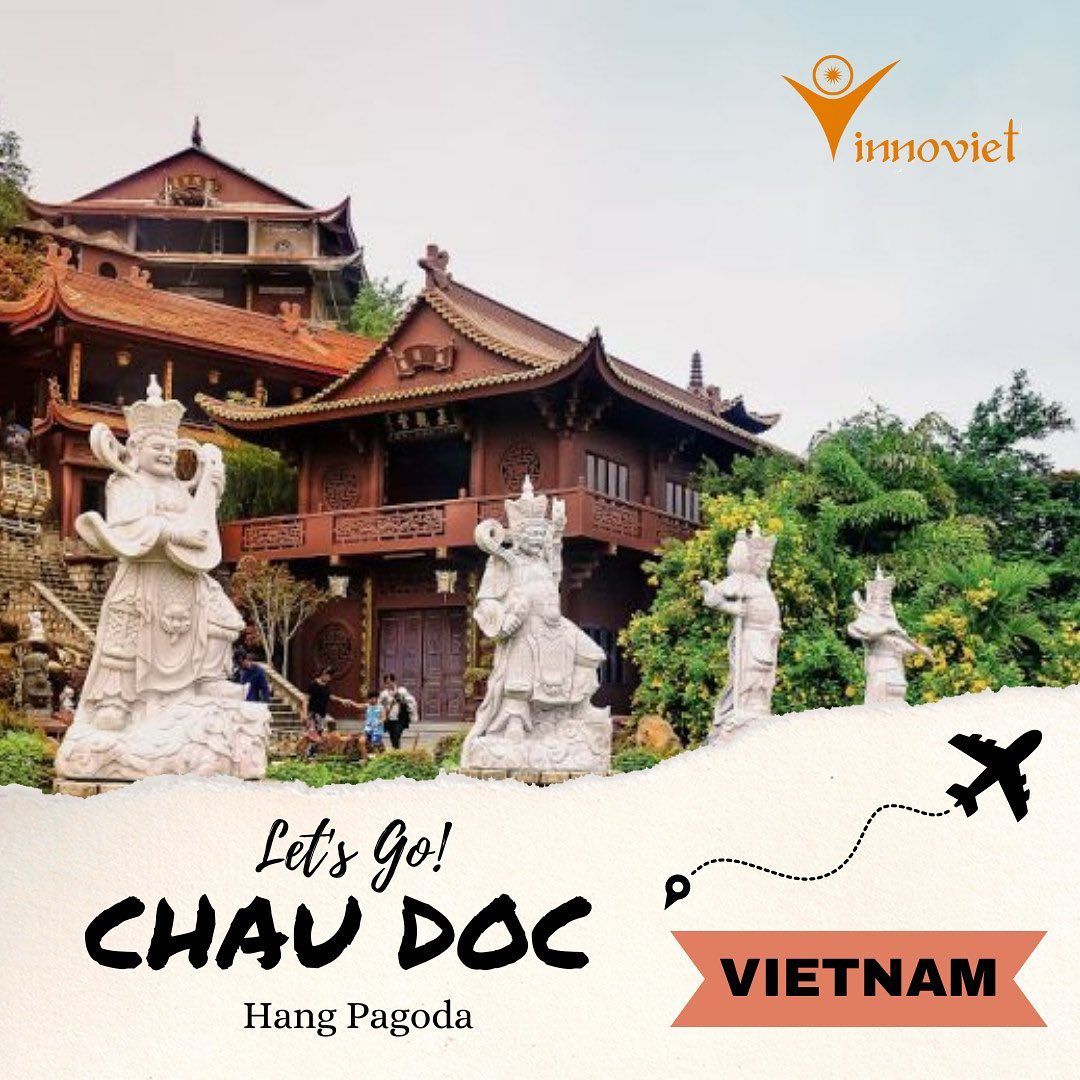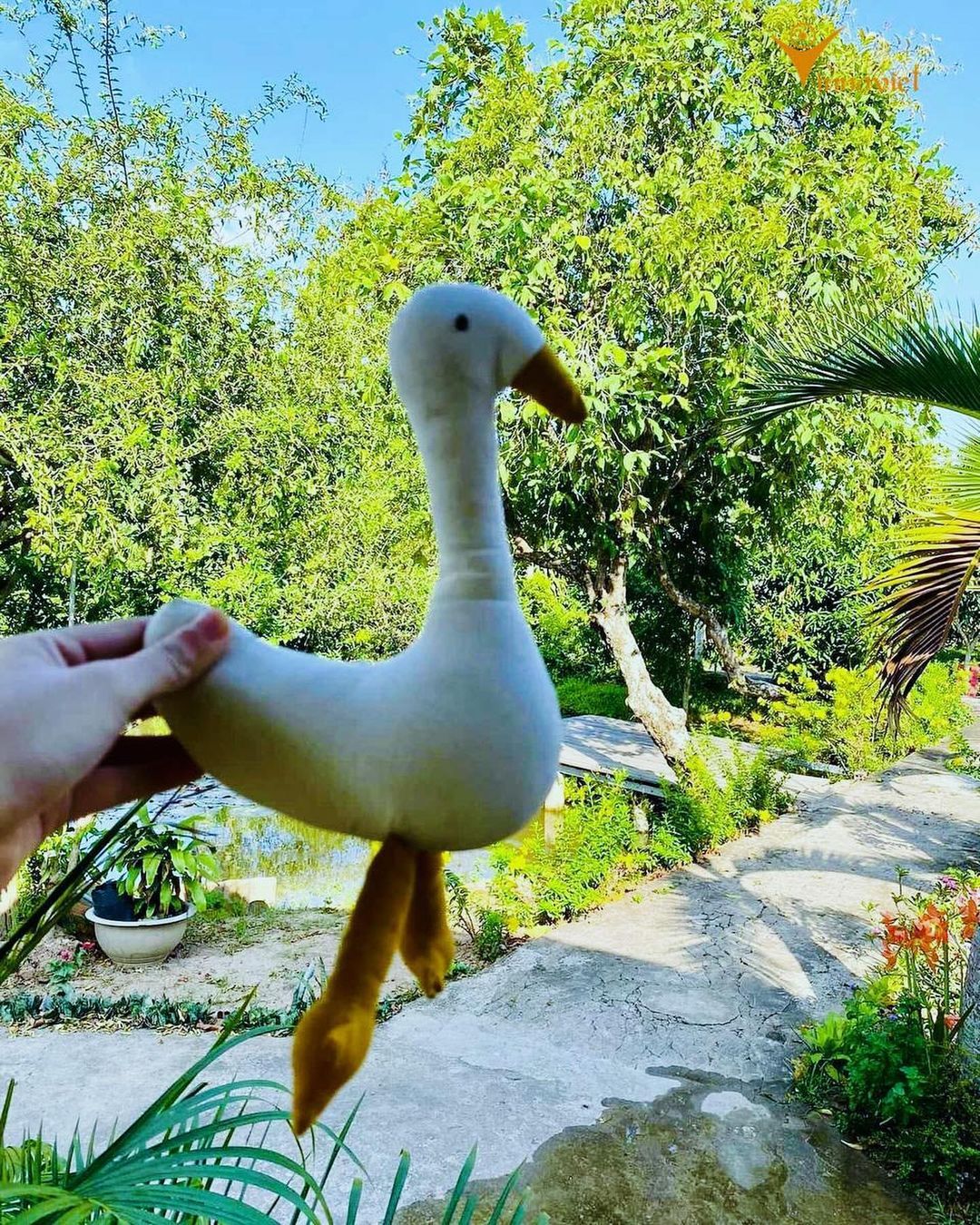Origins of Tết Trung Thu
While the Mid-autumn Festival originated in China and is celebrated in many Asian countries, the Vietnamese version has its own traditions and legends. Our best-known tale is about a man named Cuội who hung on to a magical banyan tree as it floated up to the moon. We say that if you look closely at the full moon, you can see the shadow of a man sitting under a tree. Children parade lanterns in the streets the night of Mid-autumn Festival to help light the way to earth for Cuội from the moon.
The celebration of the harvest is an important part of Tết Trung Thu, as many Vietnamese live in rural areas and work as farmers. Tết Trung Thu marks a joyous occasion when the work is finished and there’s time to spend with loved ones.
Moonlit celebrations
In the weeks before Tết Trung Thu, you will see and hear groups of lion dancers practicing on the streets. Mooncake stalls appear on every other corner, pop-ups with elaborately decorated boxes filled with a variety of mystery cakes and fillings. City districts team up with preparations of toys, lanterns and colourful masks in anticipation. The most popular Trung Thu lantern is a star made with red cellophane. You’ll see these lanterns for sale on streets all over Vietnam in the days leading up to the festival.
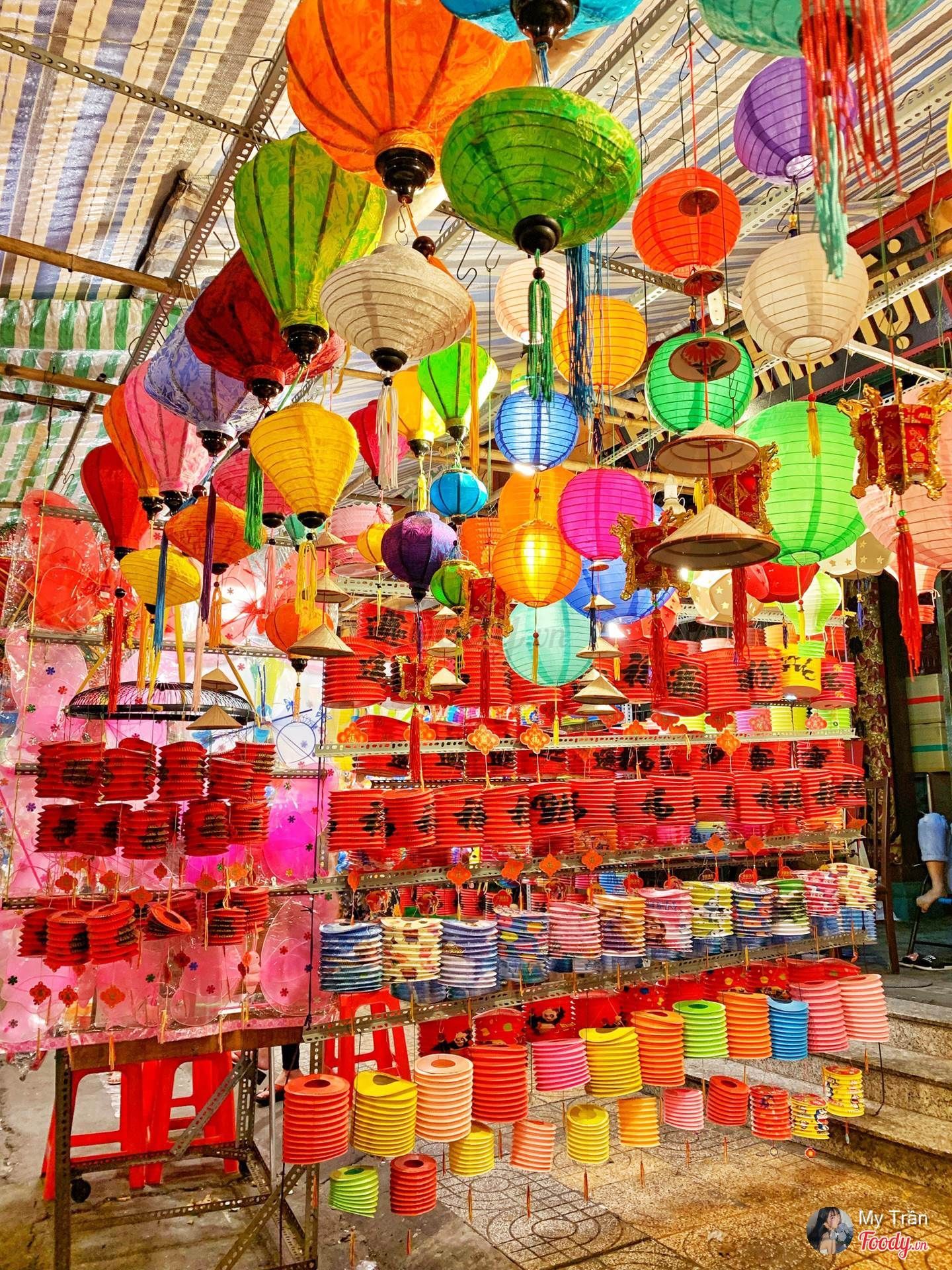
Where to celebrate the Mid-autumn Festival in Saigon
The area of Chợ Lớn in Ho Chi Minh City is home to exciting Mid-autumn festivities. Stop by Lương Như Hộc Street, famous for its lanterns, masks and lion heads overflowing on the sidewalks. This is the perfect spot to pick up a souvenir lion head. The shop at 109 Triệu Quang Phục Street has been selling lion heads to the city’s best dancers for five decades.
Source: https://vietnam.travel/things-to-do/vietnams-magical-mid-autumn-festival
Pic: Christian Berg, Foody

